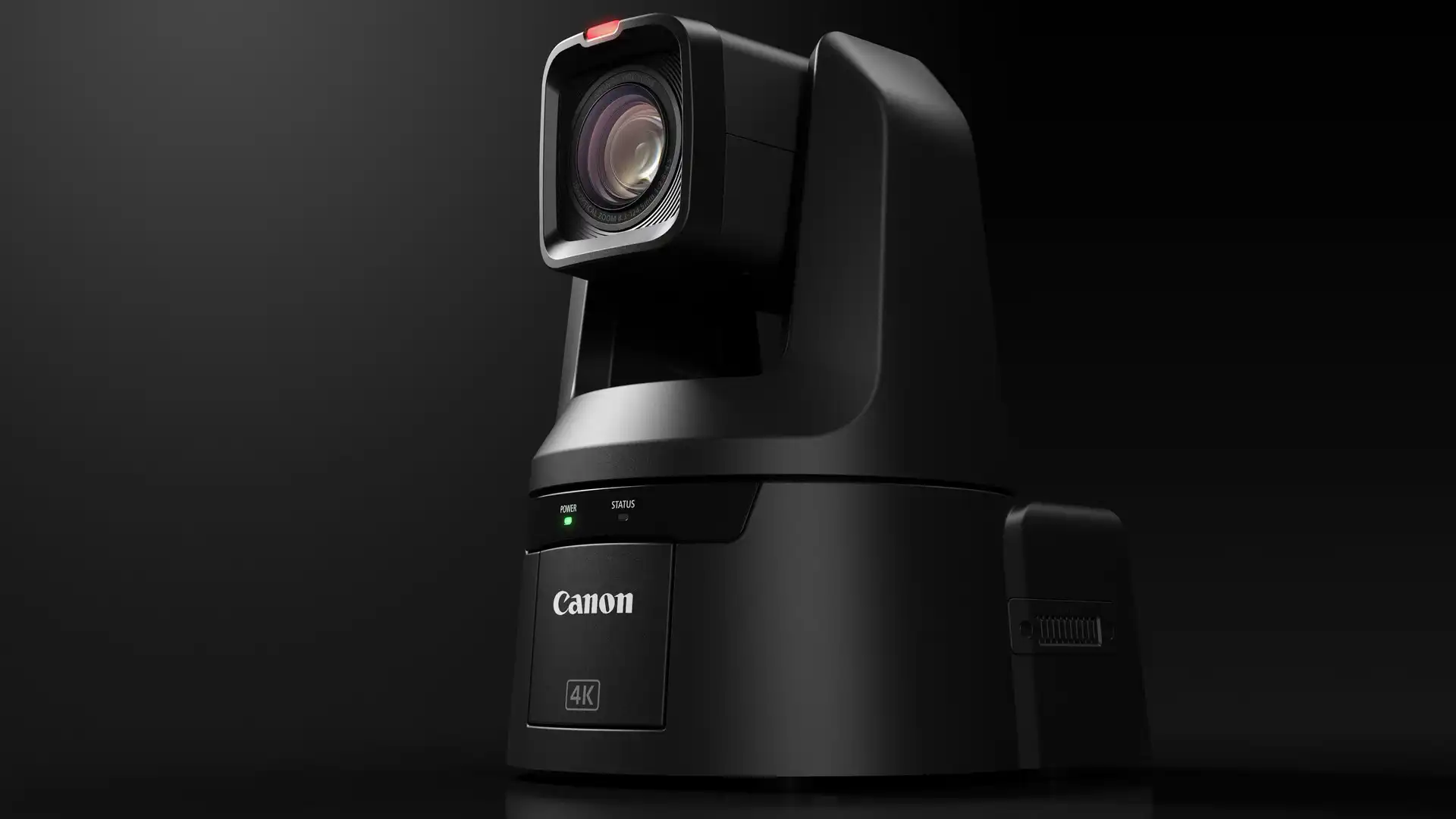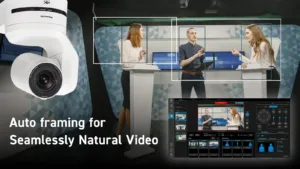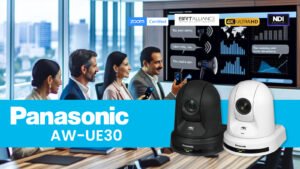PTZ Cameras vs Digital Film Cameras
Introduction to PTZ Cameras
A PTZ full form is Pan-Tilt-Zoom camera, is a versatile surveillance and videography tool. These cameras offer remote control over their horizontal and vertical movements (pan and tilt) and the ability to zoom in and out. PTZ cameras are commonly used in security systems to monitor large areas efficiently, as they can cover wide angles, follow moving objects, and zoom in for close-up details. Their application extends beyond security. As PTZ pro cameras in UAE are increasingly used in live streaming, events, and video conferencing due to their flexibility. High Resolution PTZ camera is a valuable resource for capturing dynamic scenes and ensuring optimal framing in various settings.
Distinction
PTZ pro cameras, distinct from camcorders and film cameras, offer remote pan, tilt, and zoom capabilities. While camcorders are designed for handheld use and continuous recording, PTZ pro cameras excel in adaptability, making them ideal for live events, video conferencing, and surveillance. Unlike film cameras, PTZ pro camera don’t offer the same cinematic image quality but provide real-time remote control for convenience in various scenarios. Their compact, lightweight design makes them easy to transport and set up, catering to a broad range of applications where flexibility and remote operation are paramount.
Resolution
High-resolution PTZ camera is a versatile tool, offering exceptional image quality and flexible control. With their pan, tilt, and zoom functionalities, they cover wide angles and zoom in for detailed shots. They often support 4K or even higher resolutions, ensuring crisp and clear visuals. These cameras excel in live streaming, video conferencing, and surveillance, providing smooth and precise movements. Their remote-control capabilities allow operators to adjust framing and follow subjects effortlessly. In low-light conditions, high-resolution PTZ cameras often have superior sensitivity. This feature nominates them as valuable for various applications where image quality and adaptability are essential.

Camcorders vs. PTZ Cameras
High-resolution PTZ pro camera and camcorder differ significantly in their design and intended use. Camcorders are handheld, all-in-one devices primarily used for continuous video recording. In contrast, PTZ pro cameras offer remote pan, tilt, and zoom capabilities, making them versatile for live events and video conferencing. PTZ pro cameras often deliver superior image quality and allow for dynamic framing adjustments, but they lack the convenience of continuous recording found in camcorders. Their focus is on adaptability and real-time control. This creates them valuable for applications where flexibility and high-resolution visuals are essential.
Cinema Digital Cameras vs. PTZ Cameras
Cinema Digital Camera
Cinema digital cameras are primarily designed for professional filmmaking and video production. They excel in capturing high-resolution, cinematic-quality footage. These cameras offer exceptional image quality with large sensors, high dynamic range, and the ability to shoot in various cinematic formats like RAW and ProRes.
Technicalities
Cinema cameras provide extensive manual controls for settings such as aperture, shutter speed, ISO, and focus, allowing filmmakers precise control over the creative aspects of their shots. They typically support a wide range of interchangeable lenses, including prime and zoom lenses, to achieve various cinematic effects. Cinema cameras are often used with accessories like external monitors, rigs, and follow focus systems to enhance stability and control. They are generally more expensive, with prices ranging from thousands to tens of thousands of dollars.
PTZ Camera (Pan-Tilt-Zoom)
PTZ cameras are primarily used for live streaming, video conferencing, surveillance, and remote-controlled video capture. They offer versatility in capturing events from different angles. While PTZ cameras provide good image quality, it may not match the cinematic quality of dedicated cinema digital cameras due to smaller sensors.
Technicalities
PTZ cameras are equipped with motorized functionalities that can be remotely controlled. This makes PTZ Cameras ideal for tracking subjects and capturing dynamic events. PTZ cameras come with built-in zoom lenses, offering variable focal lengths without the need for lens changes.
These cameras are user-friendly and can be operated remotely through software or hardware controllers, simplifying the capture process. PTZ cameras are generally more budget-friendly, with prices ranging from a few hundred to a few thousand dollars.
Summary
In summary, cinema digital cameras are tailored for professional filmmaking, offering superior image quality and extensive manual control. PTZ cameras, on the other hand, are versatile, automated cameras suitable for various applications like live streaming and surveillance, making them more accessible and cost-effective for a broader range of users. The choice between them depends on the specific needs and goals of the project.
Advantages of PTZ Cameras
Advantages of PTZ (Pan-Tilt-Zoom) Cameras
PTZ (Pan-Tilt-Zoom) cameras offer a range of advantages across various applications, making them a popular choice for surveillance, video conferencing, live streaming, and more. Here are some key advantages:
- Versatility: PTZ cameras are incredibly versatile. Their motorized pan, tilt, and zoom functions allow them to cover a wide field of view, track moving objects, and capture different angles, making them suitable for various scenarios.
- Remote Control: One of the most significant advantages of PTZ cameras is remote control. Operators can adjust the camera’s position, zoom, and focus remotely, eliminating the need for manual intervention and enabling efficient monitoring and recording.
- Cost-Efficiency: PTZ cameras are often more cost-effective than installing multiple fixed cameras to cover the same area. A single PTZ camera can replace several static cameras, reducing installation and maintenance expenses.
- Space Saving: Since a single PTZ camera can cover a broad area, it reduces the clutter and visual disturbance that multiple cameras may cause. This is especially useful in indoor spaces, where aesthetics are important.
- Dynamic Tracking: PTZ cameras excel in tracking moving subjects automatically. This is invaluable for surveillance applications, ensuring that critical events are captured without human intervention.
- Presets and Tours: PTZ cameras can be programmed with presets and tours. Presets allow the camera to instantly move to predefined positions, while tours enable automated sequences, making them ideal for surveillance and monitoring large areas.
- Remote Monitoring: With network connectivity, PTZ cameras can be accessed remotely over the internet. This feature is particularly useful for checking live feeds, making adjustments, and responding to incidents in real-time, even from a different location.
- High Zoom Capabilities: PTZ cameras typically come with powerful zoom lenses, allowing operators to get close-up views of distant objects without compromising image quality. This is valuable in applications such as sports broadcasting, wildlife observation, and surveillance.
- Integration: PTZ cameras can be easily integrated into existing security systems, control rooms, and network setups, providing seamless compatibility with other devices and software.
- Scalability: As the needs of a project or system change, PTZ cameras offer scalability. Additional PTZ cameras can be added or existing ones can be repositioned to adapt to evolving requirements.
Disadvantages of PTZ Cameras
- Limited Simultaneous Coverage: PTZ cameras can only focus on one area at a time. While they can pan, tilt, and zoom, they may not provide continuous coverage of multiple areas simultaneously, which could be a limitation in some surveillance applications where constant monitoring of multiple points is required.
- Complexity: The motorized functions and remote control capabilities of PTZ cameras can add complexity to their operation. Users may require training to effectively manage and utilize these features, which can lead to errors if not used correctly.
- Cost: While PTZ cameras can be cost-effective in certain scenarios, high-quality models with advanced features can be relatively expensive. Additionally, the costs associated with the necessary control systems and installation can add to the overall expense.
- Mechanical Wear and Tear: The moving parts in PTZ cameras, such as motors for panning, tilting, and zooming, are subject to wear and tear over time. This can lead to maintenance and repair costs, and the camera may become less reliable as it ages.
- Latency: When remotely controlling PTZ cameras over a network, there can be latency or delay in the camera’s response to commands. This delay may impact the camera operator’s ability to react quickly to events in real-time, particularly in critical situations like surveillance.
Use Cases and Applications
Pan-Tilt-Zoom (PTZ) cameras have gained popularity across various industries due to their unique capabilities and flexibility. Here are some industries and scenarios where PTZ cameras shine:
1. Security and Surveillance:
In the realm of security and surveillance, PTZ cameras offer exceptional benefits. Their ability to pan, tilt, and zoom allows for wide-area coverage and precise monitoring of specific points of interest. These cameras are particularly useful in areas that require constant surveillance, such as airports, shopping malls, and large outdoor spaces. PTZ cameras enable security personnel to track suspicious activities, zoom in on potential threats, and gather critical evidence for investigations.
2. Traffic Monitoring:
PTZ cameras find extensive application in traffic monitoring systems. These cameras can be strategically positioned to cover large intersections or highways, enabling traffic control centers to observe traffic flow, detect accidents or congestion, and take appropriate actions promptly. The ability to zoom in on license plates or specific vehicle details helps with identifying traffic violators, enhancing road safety, and facilitating the management of traffic-related incidents.
3. Industrial Monitoring:
Industries such as manufacturing, oil refineries, or construction sites benefit greatly from PTZ cameras. The cameras can provide real-time monitoring of industrial, aiding in identifying malfunctions, ensuring worker safety, and preventing unauthorized access. The ability to zoom and focus on specific processes or machinery enables enhanced quality control and troubleshooting.
4. Sports Events and Entertainment Venues:
PTZ cameras in UAE are indispensable in sports events and entertainment venues, where capturing dynamic action and providing optimal coverage is crucial. These cameras can be controlled remotely to follow the movement of players or performers, ensuring that every critical moment is captured from the best possible angle. Whether it’s a sporting event, concert, or live show, PTZ cameras provide a dynamic and immersive viewing experience for audiences.
Conclusion
In conclusion, PTZ cameras in UAE have revolutionized modern videography by offering remote control, efficiency, dynamic shot capabilities, cost savings, integration, high-quality imaging, scalability, and remote monitoring. Their adaptability to various production scenarios and their ability to simplify complex shooting setups have made them an indispensable tool for videographers seeking to elevate the quality and creativity of their work.
You can shop now PTZ Cameras in UAE here: https://systecintl.ae/product-category/professional-video/ptz-cameras/
You can also visit our store in Dubai: https://goo.gl/maps/YZQmjfG5vYQS3ZLU7











Add comment